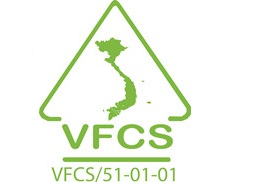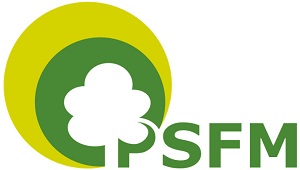Ảnh hưởng của loài gỗ đến khả năng chống chịu thời tiết của vật liệu gỗ nhựa
Từ khóa:
Bột gỗ/polyethylene, gỗ Bạch đàn urophylla, gỗ Keo tai tượng,, , gỗ Thông caribaea, thời tiết, tính chất bề mặtTóm tắt
Mục tiêu của nghiên cứu này là đánh giá khả năng chống chịu gia tốc thời tiết của vật liệu tổng hợp nhựa khối lượng thể tích cao (HDPE) và bột gỗ (WF). Bột gỗ được lấy từ ba loài gỗ rừng trồng bao gồm: Bạch đàn urophylla, Keo tai tượng và Thông caribaea. Các mẫu thử được tiến hành thử nghiệm trên máy thử gia tốc thời tiết QUV trong khoảng thời gian là 2.000 giờ. Các chỉ tiêu đánh giá bao gồm độ bền uốn, độ bền va đập và độ biến màu bề mặt. Độ biến màu bề mặt được đánh giá bằng kính hiển vi điện tử (SEM) và quang phổ học hồng ngoại (FTIR). Kết quả chỉ ra: (1) Độ bền uốn và độ bền va đập của vật liệu gỗ nhựa giảm đi khi thời gian tiếp xúc thời tiết tăng lên. Vật liệu gỗ nhựa Keo tai tượng và HDPE có giá trị MOE, MOR và cường độ va đập lớn nhất, (2) Sự thay đổi màu sắc và độ sáng của vật liệu gỗ nhựa trong quá trình tiếp xúc thời tiết tăng lên khi thời gian tiếp xúc thời tiết tăng lên. Tốc độ thay đổi phụ thuộc vào loài gỗ. Sự ôxy hóa theo thời tiết của vật liệu gỗ nhựa được đánh giá bằng mức độ tăng nhóm carbonyl song song với thời gian tiếp xúc thời tiết. Vật liệu gỗ nhựa với bột gỗ là gỗ Keo tai tượng đạt được giá trị ∆E* và ∆L* cao hơn sau khi tiết xúc thời tiết so với vật liệu gỗ nhựa vớ bột gỗ là gỗ Bạch đàn urophylla và gỗ Thông caribaea.
Tài liệu tham khảo
1. Ashori, A. and A. Nourbakhsh, 2009. "Characteristics of wood-fiber plastic composites made of recycled materials." Waste Management 29(4): 1291 - 1295.
2. Chen, Y., 2014. "Weathering Characteristics of Wood Plastic Composites Reinforced with Extracted or Delignified Wood Flour." Materials 9(8): 610.
3. Chiahuang, L., 2010. "Characteristics and discrimination of five types of wood-plastic composites by FTIR spectroscopy combined with principal component analysis." Holzforschung 64(6): 69 9 - 704.
4. Doan, T. T. L., 2007. "Jute fibre/polypropylene composites II. Thermal, hydrothermal and dynamic mechanical behaviour." Composites Science & Technology 67(13): 2707 - 2714.
5. Effah, B., 2017. "Mechanical properties of wood-plastic composites made from various wood species with different compatibilisers." European Journal of Wood & Wood Products: 1 - 12.
6. Fabiyi, J. S. and A. G. Mcdonald, 2010. "Physical Morphology and Quantitative Characterization of Chemical Changes of Weathered PVC/Pine Composites." Journal of Polymers & the Environment 18(1): 57 - 64.
7. Fabiyi, J. S., 2009. "Wood Modification Effects on Weathering of HDPE-Based Wood Plastic Composites." Journal of Polymers and the Environment 17(1): 34 - 48.
8. Fabiyi, J. S., 2008. "Wood plastic composites weathering: Visual appearance and chemical changes." Polymer Degradation & Stability 93(8): 1405 - 1414.
9. Hill, C. A. S. and D. Jones, 1996. "The Dimensional Stabilisation of Corsican Pine Sapwood by Reaction with Carboxylic Acid Anhydrides. The Effect of Chain Length." Holzforschung - International Journal of the Biology, Chemistry, Physics and Technology of Wood 50(5): 457 - 462.
10. Hon, N. S., 1991. "Wood and Cellulosic Chemistry." Polymer Degradation & Stability 73(3): 567 - 569.
11. Jabarin, S. A. and E. A. Lofgren, 2010. "Photooxidative effects on properties and structure of high‐density polyethylene." Journal of Applied Polymer Science 53(4): 411 - 423.
12. Kiguchi, M., 2007. "Surface deterioration of wood-flour polypropylene composites by weathering trials." Journal of Wood Science 53(3): 234 - 238.
13. Li, C. and A. J. Ragauskas, 2000. "Brightness Reversion of Mechanical Pulps. Part XVII: Diffuse Reflectance Study on Brightness Stabilization by Additives Under Various Atmospheres." Cellulose 7(4): 369 - 385.
14. Lionetto, F., 2012. "Monitoring Wood Degradation during Weathering by Cellulose Crystallinity." Materials 5(10): 1910 - 1922.
15. Ozdemir, T. and F. Mengeloglu, 2008. "Some Properties of Composite Panels Made from Wood Flour and Recycled Polyethylene." International Journal of Molecular Sciences 9(12): 2559 - 2569.
16. Peng, Y., 2014. "Effects of UV weathering on surface properties of polypropylene composites reinforced with wood flour, lignin, and cellulose." Applied Surface Science 317: 38 5 - 392.
17. Plastics, D. O. "Standard Specification for Polyolefin-Based Plastic Lumber Decking Boards."
18. Rangaraj, S. V. and L. V. Smith, 2000. "Effects of Moisture on the Durability of a Wood/Thermoplastic Composite." Journal of Thermoplastic Composite Materials 13(13): 140 - 161.
19. Ratanawilai, T., 2016. "Influence of wood species on properties of injection mould natural flour -HDPE composites." 131(1): 012002.
20. Rowell, R. M., 2000. "Weathering Performance of Plant-Fiber/Thermoplastic Composites." Molecular Crystals and Liquid Crystals 353(1): 85 - 94.
21. Stark, N. M., 2003. "Photodegradation and photostabilization of weathered wood flour filled polyethylene composites."
22. Stark, N. M. and L. M. Matuana, 2004. "Surface chemistry changes of weathered HDPE/wood-flour composites studied by XPS and FTIR spectroscopy." Polymer Degradation & Stability 86(1): 1 - 9.
23. Stark, N. M. and L. M. Matuana, 2007. "Characterization of weathered wood-plastic composite surfaces using FTIR spectroscopy, contact angle, and XPS." Polymer Degradation & Stability 92(10): 1883 - 1890.
24. Stark, N. M. and L. M. Matuana, 2010. "Ultraviolet weathering of photostabilized wood‐flour‐filled high‐density polyethylene composites." Journal of Applied Polymer Science 90(10): 260 9 - 2617.
25. Stark, N. M., 2010. "Effect of processing method on surface and weathering characteristics of wood–flour/HDPE composites." Journal of Applied Polymer Science 93(3): 1021 - 1030.
26. Stark, N. M. and S. A. Mueller, 2008. "Improving the color stability of wood-plastic composites through fiber pre-treatment." Wood & Fiber Science Journal of the Society of Wood Science & Technology 40(2): 27 1 - 278.
27. Tyagi, L., 2011. "Wood flour einforced plastic composites: a review: Reviews in Chemical Engineering." Reviews in Chemical Engineering 27(5 - 6): 253 - 264.
28. Verhey, S. A. and P. E. Laks, 2002. "Wood particle size affects the decay resistance of woodfiber/thermoplastic composites." Forest Products Journal 52 (November): 78 - 81.
29. Wechsler, A. and S. Hiziroglu, 2007. "Some of the properties of wood-plastic composites." Building & Environment 42(7): 2637 - 2644.
30. Wei, L. and A. Mcdonald, 2016. "A Review on Grafting of Biofibers for Biocomposites." Materials 9(4): 303.
31. Wolcott, M. P. and K. Englund, 1999. "A technology review of wood-plastic composites." 13 - 15.
32. Zhang, X., 2014. "Properties of Abutilon theophrasti Fiber-reinforced High-density Polyethylene Composites." Bioresources 9(2): 2876 - 2887.
33. Zhong, X and Ming, H, 2012. Wood-plastic composite.
34. Kumar, V., Tyagi, L. , Sinha, S, 2011. "Wood flour-reinforced plastic composites: a review: Reviews in Chemical Engineering." Reviews in Chemical Engineering 27(5 - 6): 253 - 264.
35. Wei, L. and A. Mcdonald, 2016. "A Review on Grafting of Biofibers for Biocomposites." Materials 9(4): 303.
36. Ha Tien Manh, Nguyen Bao Ngoc, Nguyen Duc Thanh, 2011. Research on effects of the rate wood flour and polypropylene plastic for wood - plastic composite properties, Journal of Wood Science 1:1752 - 1759
37. Vu Huy Dai., 2012. Research project to study the wood waste and recycled plastic production of composite materials technology. Journal of wood science 2:16 - 19
38. Tran Vinh Dieu, Tran Trung Le., 2006. Environmental Plastic Processing and Composite, Hanoi Engineering University












